Please rotate your device to landscape

For the best learning experience, we recommend to use a desktop device.

An update on diagnosis of MS and
implications for treatment
Learning objectives
This module is intended to help you:
- Understand the 2017 revisions of the McDonald criteria
- Identify in which patients the criteria should be used
- Define what is needed to fulfil dissemination in space and time of lesion in the central nervous system (CNS)
- Appreciate the importance of timely, yet accurate, diagnosis
Case study of a patient presenting with blurred vision
Francesca
- Age: 27 years
Medical history
- No significant medical event had occurred previously
Symptoms
- 1 week of blurred vision in the left eye with pain during ocular movements
Neurological exam
- - Impaired vision in the left eye with normal pupillary light reflex, brisk deep tendon reflexes
- - An ophthalmological investigation showed visual acuity was 1/10 in left eye with normal fundus oculi
Tests
- - Anti-AQP4 and anti-MOG antibody negative
- - Oligoclonal bands detected in CSF, presented normal cell count
Radiographic evidence
- - Brain MRI showed multiple focal T2-weighted periventricular, cortical-juxtacortical and infratentorial lesions, and lesions in left optic nerve
- - Spinal cord MRI showed multiple T2-weighted hyperintensity
- - None of these lesions presented enhancement
AQP4, aquaporin 4; CSF, cerebrospinal fluid; MOG, myelin oligodendrocyte glycoprotein; MRI, magnetic resonance imaging
Patient case derived from Mantero V, et al. J Clin Neurol. 2018.1
Patient case derived from Mantero V, et al. J Clin Neurol. 2018.1
Can a diagnosis of MS be made for Francesca, based on the 2017 McDonald criteria?
Select the correct answer
Case study of a patient presenting with neurological symptoms
Stephanie
- Age: 23 years
Medical history
- No medical history
Symptoms
- Left-side hypoesthesia from the mammillar line and paraesthesia in the hands, which lasted about 1 week
Neurological exam
- Left hypoesthesia with D5–D6 level, reduction of superficial abdominal reflexes to the left side, brisk deep tendon reflexes, no weakness, no Lhermitte’s sign and no sphincter dysfunction
Tests
- - Multimodal evoked potentials were normal
- - Anti-AQP4 and anti-MOG antibody negative
- - CSF examination revealed normal cell count and the presence of oligoclonal bands
Radiographic evidence
- - Brain MRI showed T2-weighted lesions involving right centrum semiovale and left frontal lobe
- - Spinal MRI showed two enhancing lesions at C2 and D1–D2 level
AQP4, aquaporin 4; CSF, cerebrospinal fluid; MOG, myelin oligodendrocyte glycoprotein; MRI, magnetic resonance imaging
Patient case derived from Mantero V, et al. J Clin Neurol. 2018.1
Patient case derived from Mantero V, et al. J Clin Neurol. 2018.1
Can a diagnosis of MS be made for Stephanie, based on the 2017 McDonald criteria?
MRI, magnetic resonance imaging
- Mantero V, et al. J Clin Neurol. 2018;14:387–92.
- Thompson AJ, et al. Lancet Neurol. 2018;17:162–73.
- Straight Healthcare. Multiple sclerosis (MS). 2019. More info. Accessed November 2019.
- Gaitán MI, et al. Front Neurol. 2019;10:466.
- Deisenhammer F, et al. Front Immunol. 2019;10:726.
- Zipp F, et al. Nat Rev Neurol. 2019;15:441–5.
- Giovannoni G. BartsMS Blog. 2013. More info. Accessed November 2019.
- Wattjes MP, et al. Nat Rev Neurol. 2015;11:597–606.
- Traboulsee A, et al. Am J Neuroradiol. 2016;37:394–401.
- Filippi M, et al. Curr Opin Neurol. 2018; 31: 386–95.
- Garrett B, et al. CMAJ 2016;188:E199.
- Filippi M, et al. Lancet Neurol. 2016;15:292–303.
- Filippi M, et al. Mult Scler. 2013;19:418–26.
- MS progression types. Physiopedia. 2014. More info. Accessed November 2019.
- Papadopoulos MC, et al. Nat Rev Neurol. 2014;10:493–506.
- Tenembaum S, et al. Neurology 2015;84:P5.275.
- Gassama S, et al. In: ECTRIMS Online Library. ECTRIMS, 2018: P339.
- Tintore M, et al. Neurology 2016;87:1368–74.
- Chalmer TA, et al. Eur J Neurol. 2018;25:1262-e110.
- Iaffaldano P, et al. In: ECTRIMS Online Library. ECTRIMS, 2018: 231469.
- Lee DH, et al. Eur J Neurol. 2019;26:540–5.
- Gaetani L, et al. J Neurol. 2018;265:2684–7.
- Schwenkenbecher P, et al. Front Neurol. 2019;10:188.
All three patients have CIS. Select the patient who, according to the information shown, can be judged to have both DIS and DIT
In a patient with CIS and fulfilment of clinical or MRI criteria for DIS, with no better explanation for the clinical presentation, presence of CSF-specific OCBs can substitute for DIT.
CIS, clinically isolated syndrome; CSF, cerebrospinal fluid; DIS, dissemination in space; DIT, dissemination in time; Gd, gadolinium; OCB, oligoclonal band
- Thompson AJ, Banwell BL, Barkhof F, et al. Diagnosis of multiple sclerosis: 2017 revisions of the McDonald criteria. Lancet Neurol 2018; 17: 162–73.
A patient with CIS is followed up. The MRI reveals:
- - Two T2-weighted juxtacortical lesions (asymptomatic)
- - One T2-weighted spinal cord lesion (considered responsible for paraesthesia)
- - No Gd-enhancing lesions
Select the number to show how many lesions should be counted to determine DIT and DIS
In the new 2017 McDonald criteria, both symptomatic and asymptomatic lesions should be counted and contribute to the determination of DIT and DIS.
CIS, clinically isolated syndrome; DIS, dissemination in space; DIT, dissemination in time; Gd, gadolinium
- Thompson AJ, Banwell BL, Barkhof F, et al. Diagnosis of multiple sclerosis: 2017 revisions of the McDonald criteria. Lancet Neurol 2018; 17: 162–73.
A patient has had an attack of optic neuritis and the MRI reveals:
- - One T2-hyperintense lesion in the optic nerve
- - One T2-hyperintense juxtacortical lesion
At this point, this patient’s MRI findings show which of the following?
Select all that apply
MRI lesions in the optic nerve in a patient presenting with optic neuritis cannot be used to fulfil the 2017 McDonald criteria. Therefore, although the patient has lesions in two areas, the criteria for DIS are not fulfilled. DIT would require simultaneous Gd-enhancing and non-enhancing lesions or a new T2-hyperintense or Gd-enhancing lesion on a follow-up MRI.
DIS, dissemination in space; DIT, dissemination in time; Gd, gadolinium; MRI, magnetic resonance imaging
- Thompson AJ, Banwell BL, Barkhof F, et al. Diagnosis of multiple sclerosis: 2017 revisions of the McDonald criteria. Lancet Neurol 2018; 17: 162–73.
Match the situation (on the left) with the additional data required for a diagnosis of MS (on the right)
CNS, central nervous system; DIS, dissemination in space; DIT, dissemination in time; MRI, magnetic resonance imaging; OCB, oligoclonal band
- Thompson AJ, Banwell BL, Barkhof F, et al. Diagnosis of multiple sclerosis: 2017 revisions of the McDonald criteria. Lancet Neurol 2018; 17: 162–73.
A neurology centre does not have access to the imaging techniques available to identify cortical lesions reliably.
Which of the following is correct? Clinicians in the centre should use…
Lack of access to MRI sequences that allow detection of cortical lesions should not be considered a limiting factor for the use of the 2017 McDonald criteria.
- Thompson AJ, Banwell BL, Barkhof F, et al. Diagnosis of multiple sclerosis: 2017 revisions of the McDonald criteria. Lancet Neurol 2018; 17: 162–73.
A paediatric patient presents with bilateral optic neuritis and the neurologist wants to rule out NMOSD.
Which tests should be done to rule out NMOSD?
Select all that apply
Serological testing for AQP4 and MOG should be done in all patients with features suggestive of NMOSDs.
AQP4, aquaporin 4; CSF, cerebrospinal fluid; Gd, gadolinium; JCV, John Cunningham virus; MOG, myelin oligodendrocyte glycoprotein; MRI, magnetic resonance imaging; NMOSD, neuromyelitis optica spectrum disorder; OCB, oligoclonal band
- Thompson AJ, Banwell BL, Barkhof F, et al. Diagnosis of multiple sclerosis: 2017 revisions of the McDonald criteria. Lancet Neurol 2018; 17: 162–73.
Congratulations!
You have completed module 2
Links and downloadable elements

An update on diagnosis of MS and implications for treatment
The diagnostic criteria for MS recently changed. This module outlines how to apply the criteria revisions in clinical practice and the potential impact on people currently diagnosed with clinically isolated syndrome.
Length
14 min course
Job code
HQ/MS/19/0040

